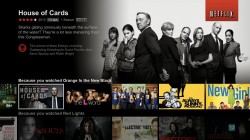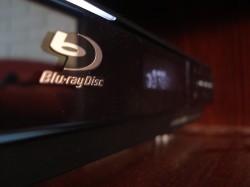Sorry for the relatively tardy nature of this week’s WNR – it’s been a weird weekend, after a long and boring week. The boringness doesn’t just extend to my personal life, but also to the professional – mainly the lack of really engaging news stories. I judge the worthiness of news stories by whether it’s something I think it’s worthy of bringing to your, my dear reader’s, attentions. And unfortunately, most of the stories this week just didn’t cut the grade, including the ones that I will discuss in this issue.
I mean, just judge for yourselves. Take this story of Netflix dominating UK traffic (story digest: Netflix is popular in the UK. Whatsapp is popular in Africa). Here’s a story that I tossed and turned about, nearly wrote it up as I was desperate, but in the end, common sense prevailed. How much of a Netflix fanatic must you be to be interested in a non-story like that? I don’t think such a person actually exists.
Or this story (story digest: uTorrent bug might be causing errant traffic stats), which caught my attention, but at the end of the day doesn’t really make much of a difference. While I’m sure some will be interested in this story, I for one just couldn’t bring myself to write a story about a software bug that will probably be fixed by the time I wrap it up on here (story digest update: uTorrent bug identified and now fixed).
And there were many many other such examples for the week, including re-hashes of the major stories from the last few weeks (Xbox One Kinect blah blah blah, Netflix price rise and what it means for you blah, and so on). Even an expected update to the “Wii U is doomed” story line failed to materialise due to the lack of further April NPD updates.
So in other words, a slow news week. Apologies in advanced for the rest of the WNR, which covers two almost pointless stories, but were considered to be the best of the what’s available. Again, deeply sorry.
![]()

The Pirate Bay website may exists in the cloud only, and distributed on millions of people’s computers, if their P2P web browsing vision becomes a reality
The Pirate Bay’s official web browser, the PirateBrowser, has been downloaded more than 5 million times since its release last August. For those that don’t know, the PirateBrowser combines a version of Firefox with a Tor based tool and custom configurations to make sure censored sites, like The Pirate Bay, can still be browsed.
While the PirateBrowser definitely allows users to bypass copyright censorship regimes in countries like the UK and Denmark, it also works in countries like Iran and North Korea (assuming users there have the Internet. And a computer. And electricity), helping people there bypass their country’s freedom-curbing censorship regimes.
What is more interesting may be The Pirate Bay’s next software project, which will produce a P2P based web browser that allows websites, not just music, movies and games, to be distributed and stored in a peer-to-peer fashion. Imagine if instead of having a central server where The Pirate Bay content and data are stored, a server that can be shut down, that the website stuff is actually being seeded and shared by everyone who is browsing the website at the time. This effectively means that the website cannot be taken down, as long as at least one users is still seeding it, and it would also greatly reduce the resources needed to maintain such a site by the site’s owners.
Now combine the PirateBrowser and this new P2P way of web hosting, and you’ll have a side that cannot be blocked, or shut down. I hope those that supports copyright filtering and censorship will soon realise how much trouble they’re in for when this happens.
![]()
Good news for Sony and the PS4 – the $399 console, released only six months ago, is already profitable. This compares much favorably to the PS3, which took 4 years and several re-designs to be finally not a financial burden for Sony.

The PS4 got the balance between performance and pricing just right, and gambled and won on a couple of smart design decision
What this also means, for us consumers, is that Sony can and probably will give us a price cut for the wildly popular PS4 if the competition between it and the Xbox One heats up as expected (following the Xbox One’s “price cut”). I don’t think it will happen in the short term though, as Sony is still not quite there yet in terms of being a profitable company (and it’s not really needed yet, given the popularity of the PS4).
Now some cynics might say this proves the PS4 was nothing more than an evolutionary upgrade, not the revolutionary stuff that we should have had. Others will say that Sony lucked out with the PS4 thanks to a gamble on the choice of memory, with improved availability and price very late on in the PS4’s design process allowing Sony to make a superior performing machine without an uninspiring price point. The fact that Microsoft decided to shoot themselves in both feet, first with the DRM (decision reversed) and the higher pricing due to mandatory Kinect bundling (decision now also reversed). also helped.
For me, the PS4 is what the PS3 should have been. The PS4 is a great combination of performance and pricing, and corrects most of the mistakes Sony made with the PS3, from design to promotion.
——
Okay, that wasn’t as bad as I thought it would be. Not entirely boring or pointless, but not the most riveting stuff either. The next week is already looking better with a couple of late breaking stories, so fingers crossed. See you in a week!









